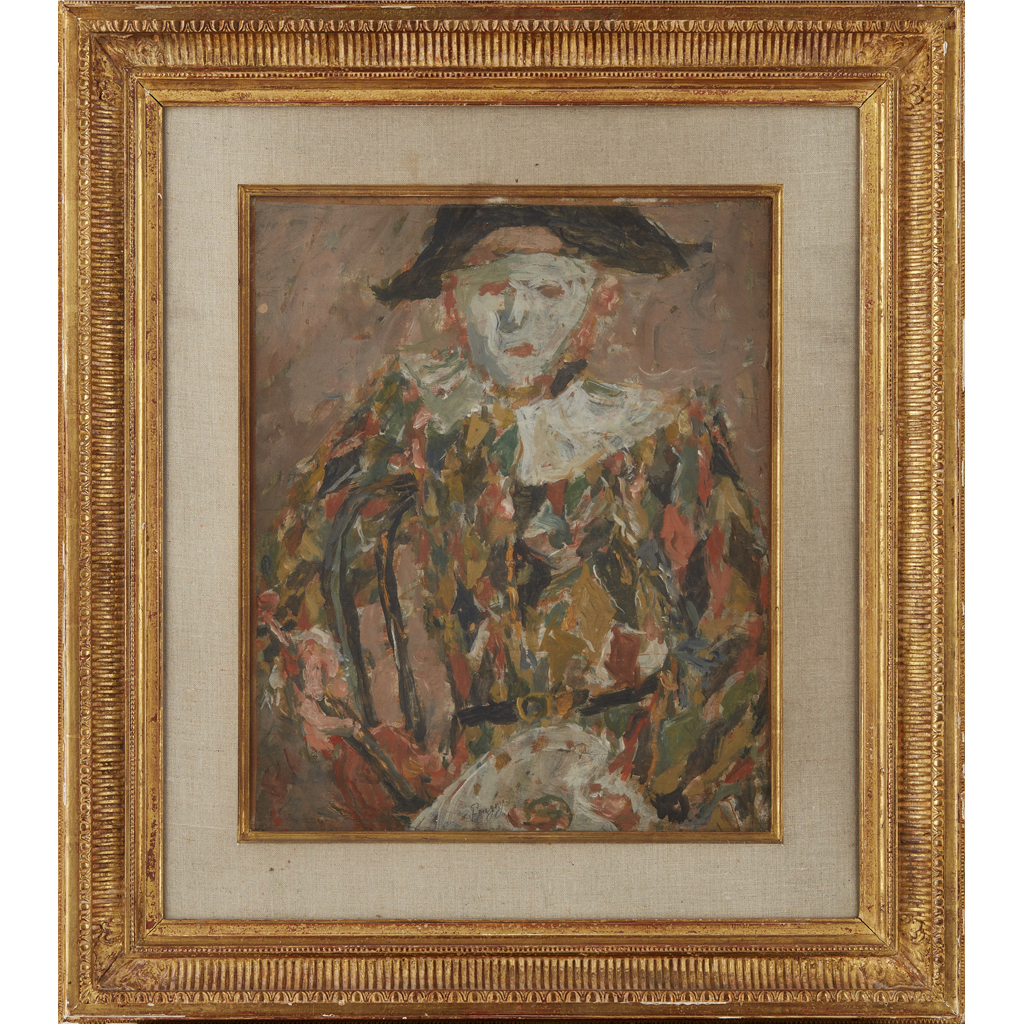JEAN POUGNY (IVAN PUNI) (RUSSIAN 1892-1956) §
ARLEQUIN
£4,250
British and European Paintings
Auction: 24 May 2017 at 12:00 BST
Description
Signed 'Pougny,' oil on canvas
Dimensions
46cm x 38cm (18in x 15in)
Footnote
Exhibited: Salon des Tuileries 1934, No 6, Pugny exhibition, St Etienne 1958, No 11
Note: Jean Pougny, or Ivan Puni as he was originally known, is a fascinating artist whose work straddles two of the great European Modernist art movements of the twentieth century. A Russian by birth, Pougny was of Italian extraction and had a family background in the arts; his grandfather was the highly regarded composer of ballet scores, Cesare Pugni. Attracted to painting, Pougny, like so many notable artists of the period, was drawn to the artistic hub of Paris as a young man. Initially influenced by the Fauves, he trained at the Academie Julian between 1910-1911.
Pougny returned to Russia in 1912 and his work evolved to become informed by Cubist tendencies. Now a key protagonist within the artistic collectives developing in St Petersburg, he exhibited alongside the likes of Kazimir Malevich and Vladimir Tatlin. He and his wife the artist Kseniya Boguslavskaya were a focal point of the avant-garde scene and their apartment became a meeting place for artists and poets.
In 1916 he joined the Supremus group founded by Malevitch, co-writing the manifesto which, on the eve of the 1917 Revolution, posited a new abstract art for a new era based upon "the supremacy of pure artistic feeling" rather than on visual depiction of objects. He also co-organised the now iconic 0.10 exhibition.
In 1919 he and Boguslavskaya escaped the Soviet Union, fleeing across the ice of the Gulf of Finland and settling for a time in Berlin where the first solo exhibition of his work was held at the Galerie der Sturm. From 1923 they resided in Paris, where Puni changed his name and began signing his artworks Pougny to better appeal to the French market. His style reverted to its Fauvist roots and he became fully re-embedded within French artistic traditions.
The subject of the Harlequin was a trope explored by many of the French Modernists, from Cezanne to Juan Gris. A stock character from the Italian Commedia dell'art, Harlequin was a mischievous trickster; representative of the impulses of whimsy and romance. Perhaps unsurprisingly, he became a popular alter-ego for many artists of this period. They were no doubt also attracted by the traditional design of Harlequin's costume which comprised tri-colour diamond shapes, finding it reflected the geometry of form and purity of colour that was being explored at this time.
Pougny died in Paris in 1956; after which his wife donated 12 paintings to the Musée National d'Art Moderne in Paris in 1959.

